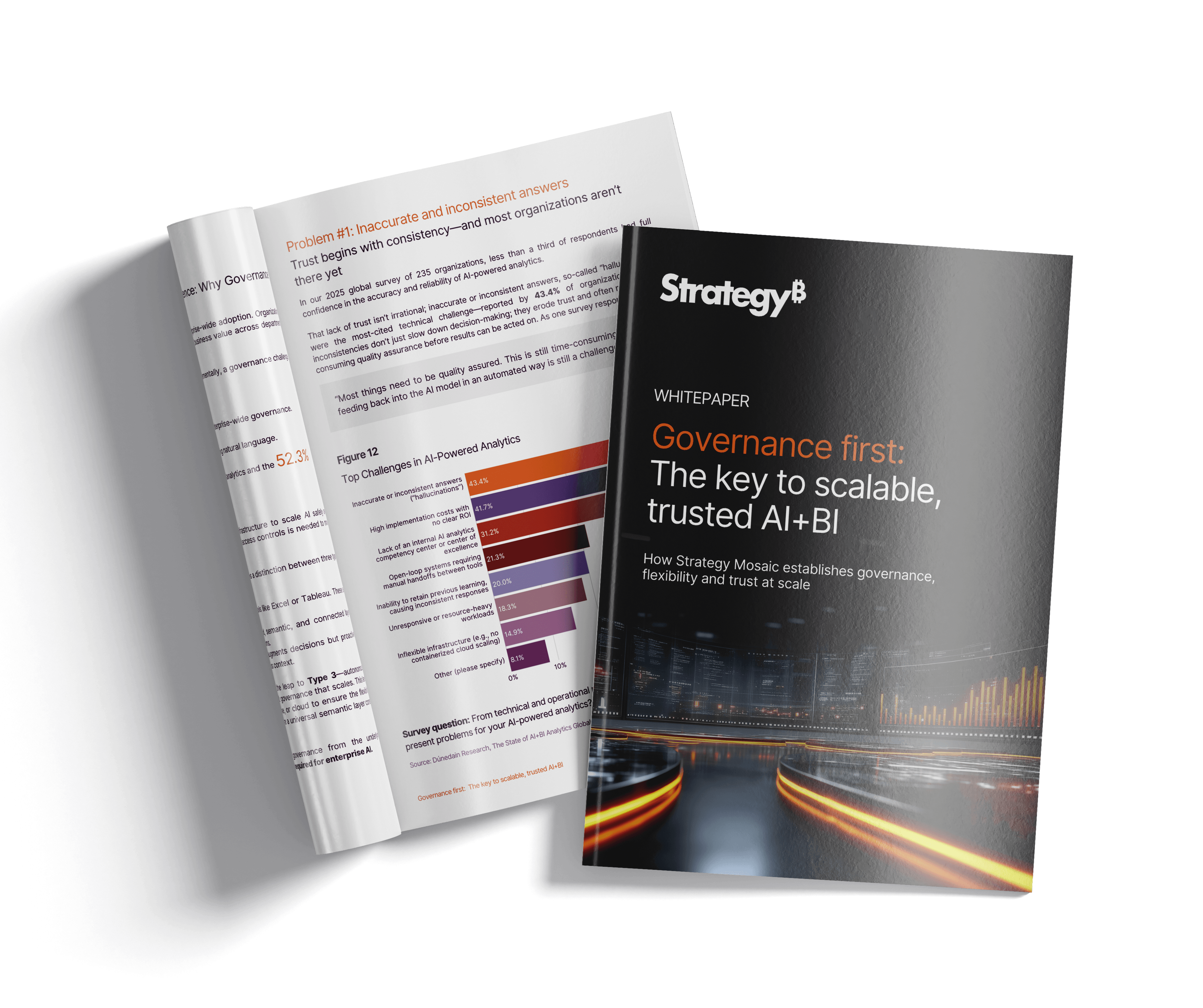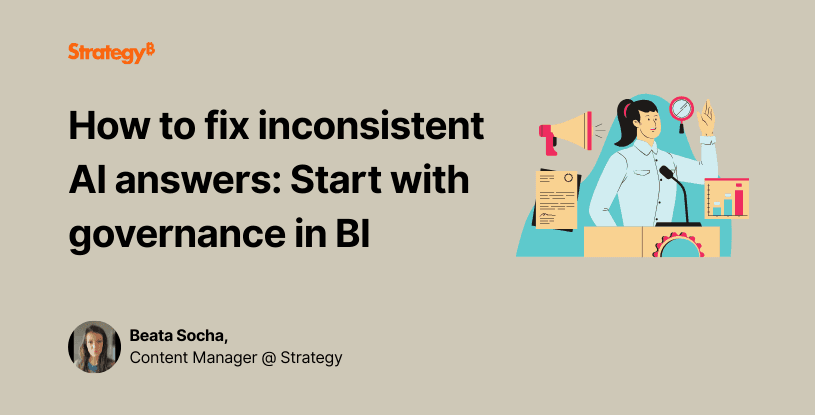Governance is the missing link in enterprise AI + BI
As AI-powered analytics scale across enterprises, five common challenges continue to stall progress. Discover what they are —and explore how a governance-first architecture solves them with a single solution: the universal semantic layer.
AI-powered analytics is gaining momentum, but widespread adoption remains elusive. In the new whitepaper Governance First: The Key to Scalable, Trusted AI+BI, Strategy identifies five problems that limit the effectiveness and scalability of AI and BI systems—and shows how a governance-first approach, enabled by the universal semantic layer, addresses them all.
The whitepaper draws on insights from the 2025 State of AI+BI Analytics global survey and outlines a practical path forward for organizations seeking to unify data, tools, and teams.
Problem 1: Inconsistent AI outputs
43.4% of organizations cite inaccurate or contradictory results as the biggest technical challenge in AI-powered analytics. Commonly referred to as “hallucinations”, they are a major barrier to trust and adoption.
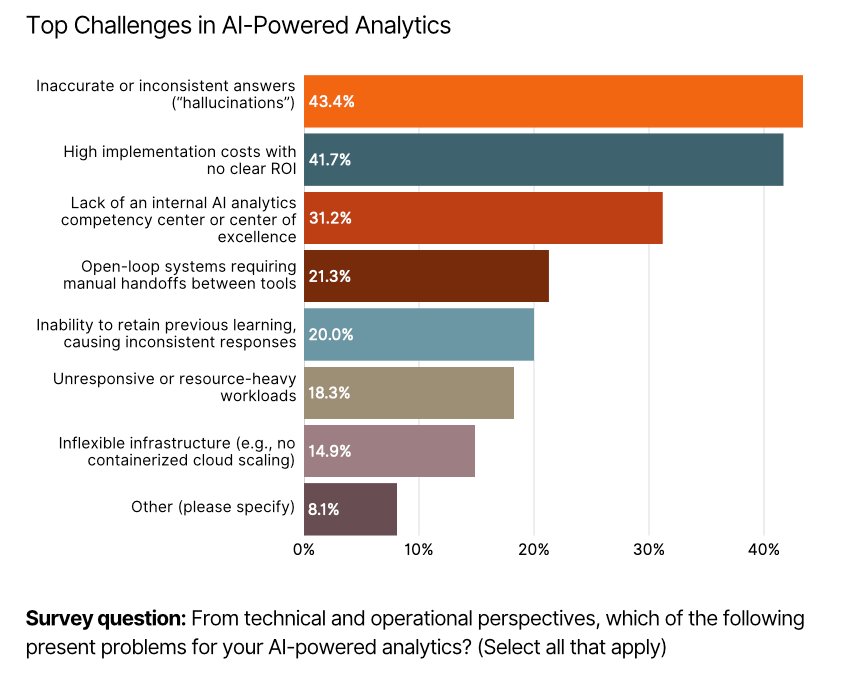
Source: Governance First: The Key to Scalable, Trusted AI+BI
These inconsistencies stem from fragmented logic. Different teams and tools often define metrics like “revenue” or “customer lifetime value” in conflicting ways. This leads to:
Duplicated effort
Decision-making delays
Unreliable outputs
The solution: A modern, universal semantic layer creates a single, certified definition for each metric. Whether a user queries data through a BI dashboard or an AI agent, they receive the same answer through a unified business logic layer. This consistency builds trust and eliminates the need for manual quality assurance while streamlining semantic data modeling across the enterprise.
“Mosaic provides a single set of models with clearly defined business definitions—like revenue and product, for example. Whether you’re accessing them from Tableau, Excel, or through an AI tool using SQL, Mosaic calculates metrics the same way and gives you the same answer across all platforms.”
— Saurabh Abhyankar, Chief Product Officer, Strategy
Problem 2: Security and compliance risks
Organizations use different tools to collect and analyze data.
However, the security policies embedded in individual tools are difficult to enforce consistently across platforms. This increases the risk of unauthorized access and policy violations.
As organizations expand AI access to more users and systems, data privacy and regulatory compliance become harder to manage. In fact, 52% of respondents cite compliance—including data privacy, bias mitigation, and regulatory adherence—as a primary concern.
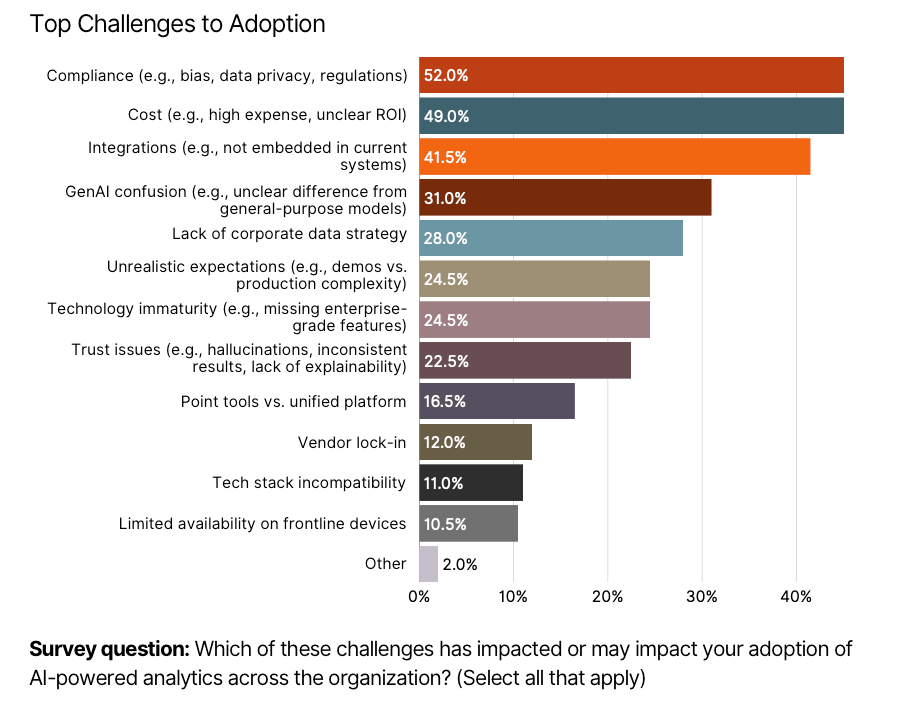
Source: Governance First: The Key to Scalable, Trusted AI+BI
The solution: A governance-first architecture embeds security controls at the semantic layer level—not just at the tool level. With Strategy Mosaic, row-, column-, and feature-level security policies are enforced and automatically applied across all tools and queries. This ensures compliant, context-aware access to sensitive data.
“You can expose data to AI tools in a tightly controlled way—ensuring that the AI only sees the data it’s authorized to work with. That way, your AI initiatives remain compliant, secure, and aligned with business rules from day one.”
— Saurabh Abhyankar, Chief Product Officer, Strategy
Problem 3: Lack of flexibility and vendor lock-in
Most enterprises operate in hybrid, multi-cloud environments. Yet many analytics platforms still assume a closed-stack model, tying logic to specific databases or tools. This limits flexibility and makes it costly to switch platforms or adopt new technologies.
“You need to be able to react, leverage new technologies, and respond quickly to events such as mergers and acquisitions. This is where our independence comes into play. We are not beholden to any particular stack. We have a very open mindset—our mission is to help you use any technology to manage costs and risks for your entire data estate.”
— PeggySue Werthessen, VP of Product, Strategy
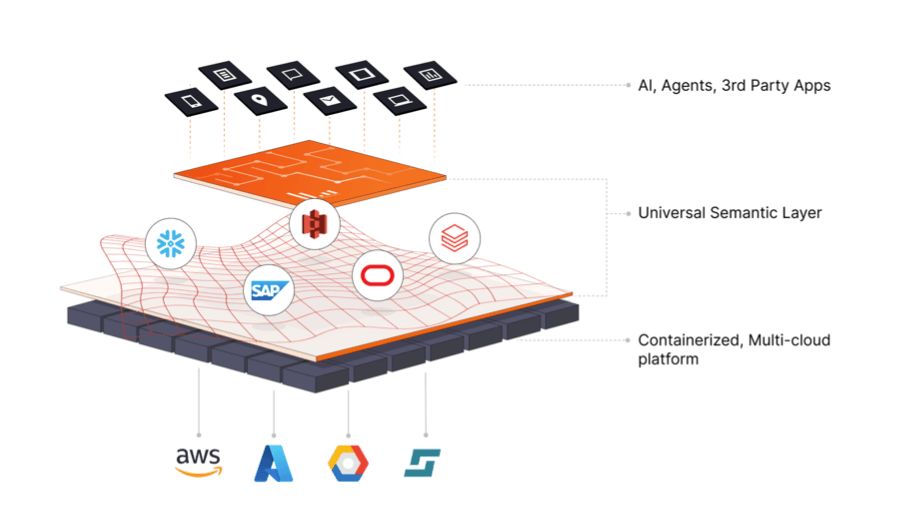
The solution: By separating governance from infrastructure, Strategy Mosaic removes dependencies on specific vendors. Business logic is defined once and applied consistently across all platforms—whether on AWS or Azure, Snowflake or BigQuery, Tableau or Power BI. This vendor-agnostic semantic layer enables agility without rework or disruption.
Problem 4: Hidden costs of investment
AI and BI are often positioned as cost-saving technologies, but without control, they can become financially unsustainable. Unpredictable compute bills, redundant data pipelines, and the cost of duplicated modeling all erode ROI.
No wonder 49% of organizations cite cost—particularly unpredictable returns—as a major barrier to scaling AI + BI.
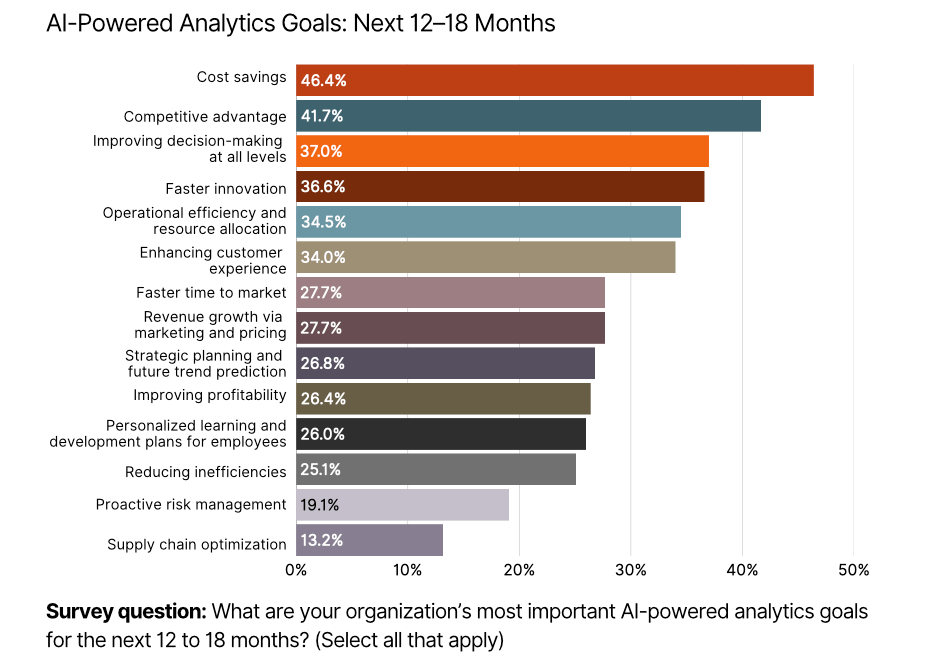
“One of the things we specifically designed Mosaic to do is help you achieve cost arbitrage.”
— Saurabh Abhyankar, Chief Product Officer, Strategy
The solution: Strategy Mosaic enables cost arbitrage by decoupling compute workloads from business logic. Organizations can route queries to the most efficient engine, avoid expensive ETL processes, and cache repeated queries to reduce data warehouse strain. With a user-based pricing model, Mosaic also eliminates surprise charges tied to query volume.
Problem 5: Rising complexity across the data environment
As enterprises adopt more tools and distribute analytics across departments, complexity grows. Without shared governance, this results in duplicated models, conflicting metrics, and fragile systems that are difficult to scale or audit.
“The real problem isn’t that you have multiple BI tools. It’s that you have duplication of effort and inconsistency of information across those tools.”
— PeggySue Werthessen, VP of Product, Strategy
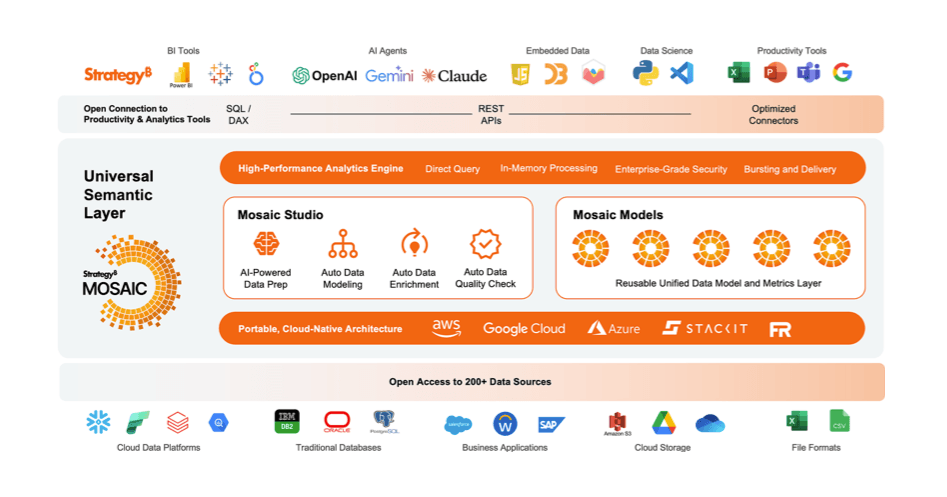
The solution: Strategy Mosaic acts as a governance fabric across the analytics stack. It ensures all users and tools rely on the same definitions and security policies. When the tech stack evolves, Mosaic adapts—without requiring organizations to rebuild dashboards, models, or access rules.
A governance-first foundation for AI+BI
Simply put, these five challenges are symptoms of fragmented governance.
When organizations have complete control over data, insights flow freely, and growth thrives.
Strategy Mosaic delivers this foundation. Its AI-ready, universal semantic layer provides the governed data foundation needed to scale AI + BI with trust, consistency, and flexibility.
By defining business logic, access policies, and modeling rules centrally, Mosaic enables consistent, explainable, and cost-effective analytics across every endpoint—from BI dashboards to AI agents.
The enterprises that master governance will lead the AI era.
Get the proven framework for scaling AI + BI with trust, confidence, and speed.
Related posts
